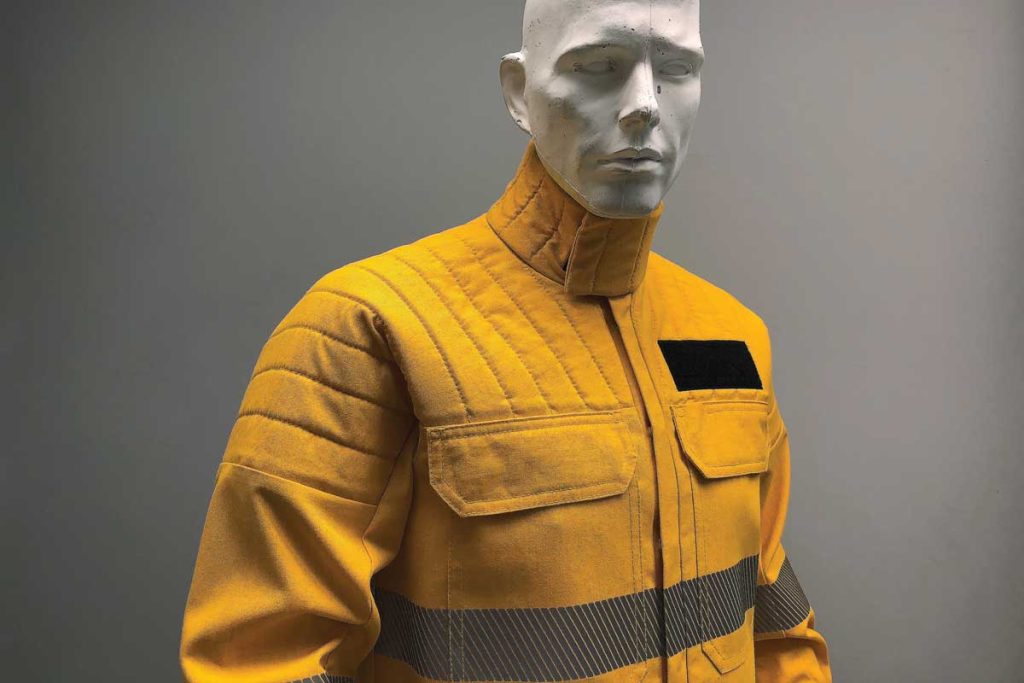Submission 2024
| Submitted by: | Elena Kosareva |
| Department: | Human Ecology |
| Faculty: | Agricultural, Life & Environmental Sciences (ALES) |
The image shows a prototype shirt that I designed and constructed as part of my research investigating ways to improve the protective clothing worn by wildland firefighters. Previous researchers had shown that their current protective clothing was unable to protect areas of the body in direct contact with the garment fabric during flashfire testing that involved a dressed manikin engulfed in flames. The contact areas of the garment showed more burn injury than areas where an air gap between the fabric and skin was maintained.
Considering that air is a good thermal insulator, the idea behind my shirt design was to improve the thermal protection using a 3D spacer material. The spacer material added protection by maintaining an air layer in selected areas of the garment. At the same time, the porous spacer material did not prevent air movement through the shirt and allowed for the evaporation of sweat. The image shows the successful achievement of my research and design work that culminated in production of the well-fitting prototype garment.
Was your image created using Generative AI?
No.
How was your image created?
During my research, I developed the novel design of the prototype shirt, created patterns, and constructed it. I took this image on a cellphone camera for the garment fit assessment. This prototype was worn on top of the manikin – the instrumented flash-fire manikin system that is located at the Flash Fire Facility (University of Alberta). Further, the thermal protective properties of the shirt prototype were assessed by that system. It predicted the burn injury pattern and calculated the percentage of total burn injuries on the body after short-duration full-flame engulfment.

